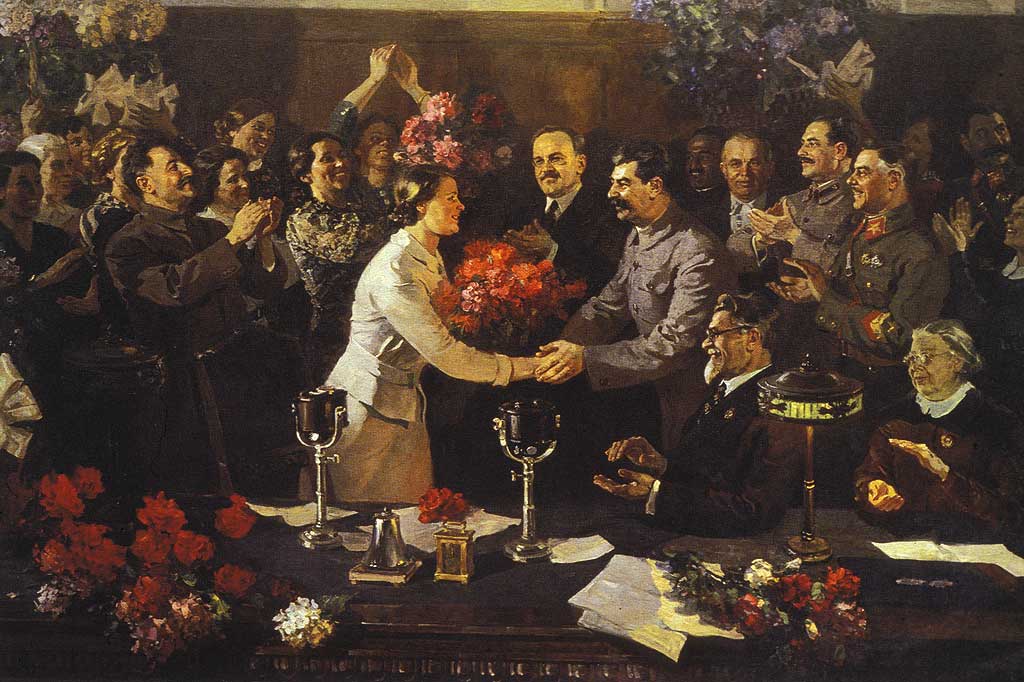(单词翻译:单击)
视听文本
Stalin got the upper hand over Trotsky,
斯大林打败了托洛茨基
exiled him from the USSR in 1928, and spent the next 12 years hounding Trotsky wherever in the world he went.
1928年把他流放出苏联并在随后的12年里不断追击
In 1940, one of Stalin's agents killed Trotsky with an ice pick to the brain in Mexico.
1940年斯大林的一个特工在墨西哥用碎冰锥刺杀了托洛茨基
By this time, Stalin had already named Trotsky as Judas Trotsky and had unleashed the Great Terror,
这时,斯大林就已经把托洛茨基称作“犹大·托洛茨基”了,并进行了大恐怖统治
executing or imprisoning literally millions of soviet citizens for their so-called Trotsky-ism.
处决或关押了上百万苏联市民,罪名就是所谓的托洛茨基主义
As defined by Stalin, Trotsky-ism included a number of crimes;
斯大林为托洛茨基主义定义了一系列罪名包括
sabotage, spying for foreign powers, terrorism, and especially presenting a threat real or imagined to Stalin.
破坏活动,当国外间谍,恐怖主义,还有就是对斯大林进行实质或想象的威胁
Ivan the Terrible, Diocletian, would've been proud.
伊凡大帝,戴克里先都会为他骄傲的
3. The Hammer and Sickle Explained
3.锤子和镰刀旗的意义
The hammer in the communist symbol stood, of course, for the urban working class, the true proletariat.
共产党把锤子的意义定义为城市工人阶级,他们是真正的无产阶级
The sickle stood for the peasant masses who made up the great majority of Russia's population.
而镰刀则代表组成俄国大多数人口的农民
Appearing together, the hammer and sickle stood for the 'smitchka', the alliance between workers and peasants upon which the Soviet Union depended.
锤子和镰刀共同出现就代表着工农联盟,苏联就建立在此基础之上
视频及简介
课程介绍:
此课程介绍了斯大林与苏联。
原声视频:


